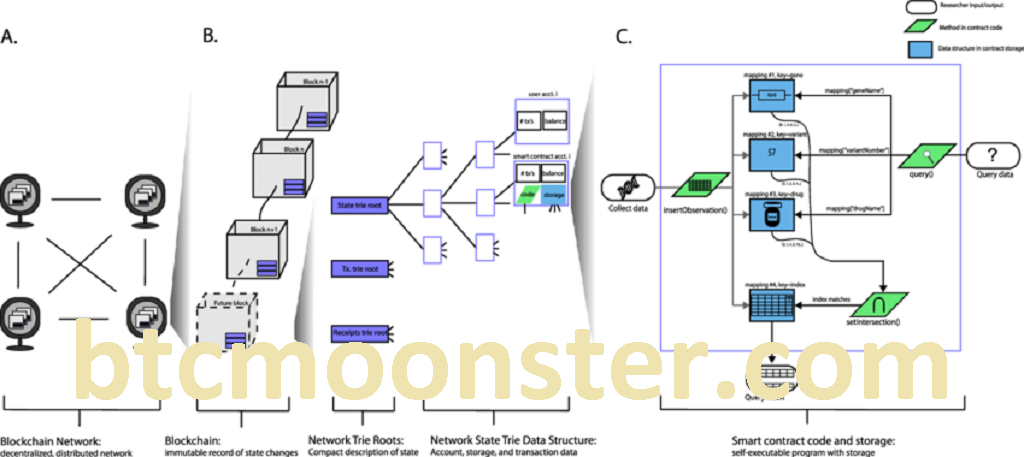Understanding Ethereum as a Distributed System
Ethereum, a groundbreaking technology that has gained immense attention and adoption, is indeed a distributed system at its core. A distributed system is a network of interconnected computers, or nodes, that work together to achieve a common goal. Ethereum’s distributed nature is a key factor in its ability to provide a decentralized platform for various applications, including smart contracts and decentralized applications (dApps).
At its heart, Ethereum operates as a distributed and decentralized platform that enables developers to build and deploy applications without relying on a central authority. This unique architecture is in stark contrast to traditional centralized systems where a single entity has control over data and operations. Instead, Ethereum employs a consensus mechanism, often utilizing Proof of Work (PoW) or transitioning to Proof of Stake (PoS) in Ethereum 2.0, to ensure agreement among participants and maintain the integrity of the network.
The distributed nature of Ethereum is evident in its blockchain, which is a public, tamper-resistant ledger distributed across multiple nodes. Each node holds a copy of the entire blockchain, ensuring that no single entity can manipulate the data. This decentralized ledger is maintained through a process called mining (PoW) or staking (PoS), where nodes compete to validate transactions and add new blocks to the chain. This consensus mechanism not only ensures the security of the network but also prevents any single point of failure.
In conclusion, Ethereum’s architecture and underlying technology make it a quintessential example of a distributed system. Its decentralized nature, consensus mechanisms, and the use of a distributed ledger are all fundamental components that contribute to Ethereum’s ability to provide a secure, transparent, and tamper-resistant platform for various applications. As the Ethereum ecosystem continues to evolve and improve, its distributed system model remains at the core of its innovation and success.
Exploring Ethereum’s Distributed Applications (dApps)
Ethereum, a revolutionary platform in the realm of blockchain technology, has paved the way for the development and deployment of distributed applications, commonly known as dApps. These applications leverage the power of Ethereum’s decentralized architecture to offer a new level of security, transparency, and functionality to users across the globe.
Distributed applications, or dApps, are software programs that run on a decentralized network of computers, ensuring that no single entity has complete control over the application’s operations. Ethereum provides a conducive environment for building dApps due to its robust infrastructure and smart contract capabilities.
At the heart of Ethereum’s ecosystem are smart contracts, self-executing contracts with the terms of the agreement directly written into code. Smart contracts are deployed on the Ethereum blockchain, and their execution is enforced by the network’s distributed nodes. This ensures that the terms of the contract are executed without any need for intermediaries, thereby eliminating the risk of human error or manipulation.
Distributed applications built on Ethereum can encompass a wide range of use cases, including decentralized finance (DeFi), supply chain management, digital identity verification, and more. These applications benefit from Ethereum’s secure and transparent environment, enabling developers to create innovative solutions without relying on traditional central authorities.
In conclusion, Ethereum’s distributed architecture forms the foundation for the development of distributed applications. By utilizing smart contracts and the security of the blockchain, dApps can provide users with a level of trust and autonomy that was previously unattainable in traditional centralized systems. As Ethereum continues to evolve, its role in fostering the growth of distributed applications remains a testament to its impact on the world of technology and finance.
Sources:
- Ethereum Whitepaper: https://ethereum.org/whitepaper/
- “Mastering Ethereum” by Andreas M. Antonopoulos and Gavin Wood
- Ethereum Developers’ Guide: https://ethereum.org/developers/
- Ethereum 2.0: https://ethereum.org/eth2/
- Distributed Systems: Principles and Paradigms by Andrew S. Tanenbaum and Maarten Van Steen
Ethereum, distributed applications, dApps, blockchain, smart contracts, decentralized finance, DeFi, decentralized systems, Ethereum ecosystem.
